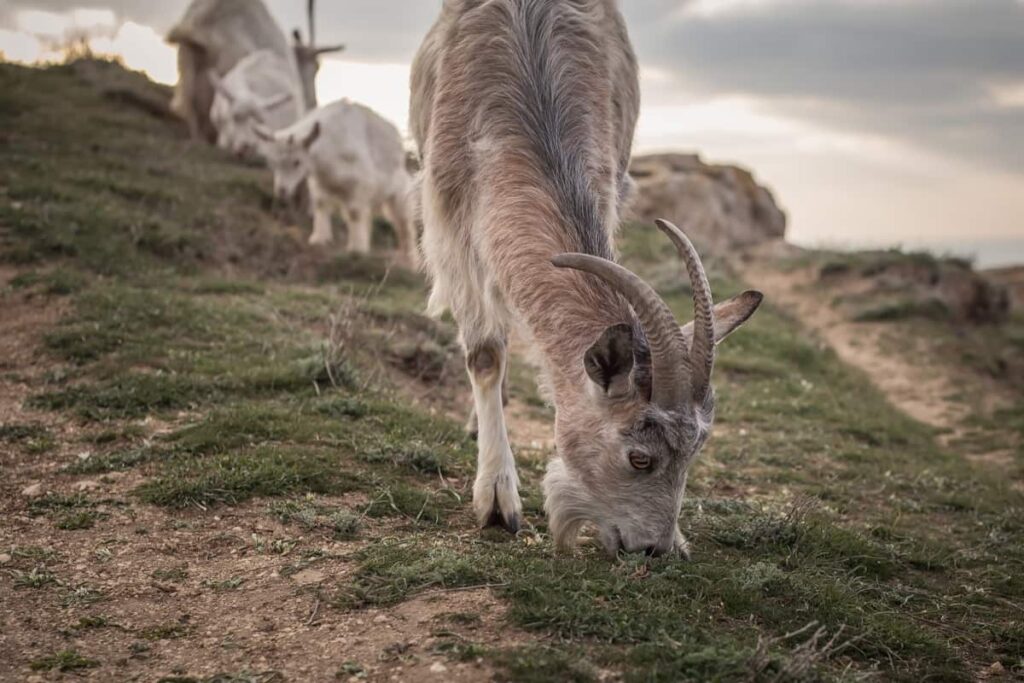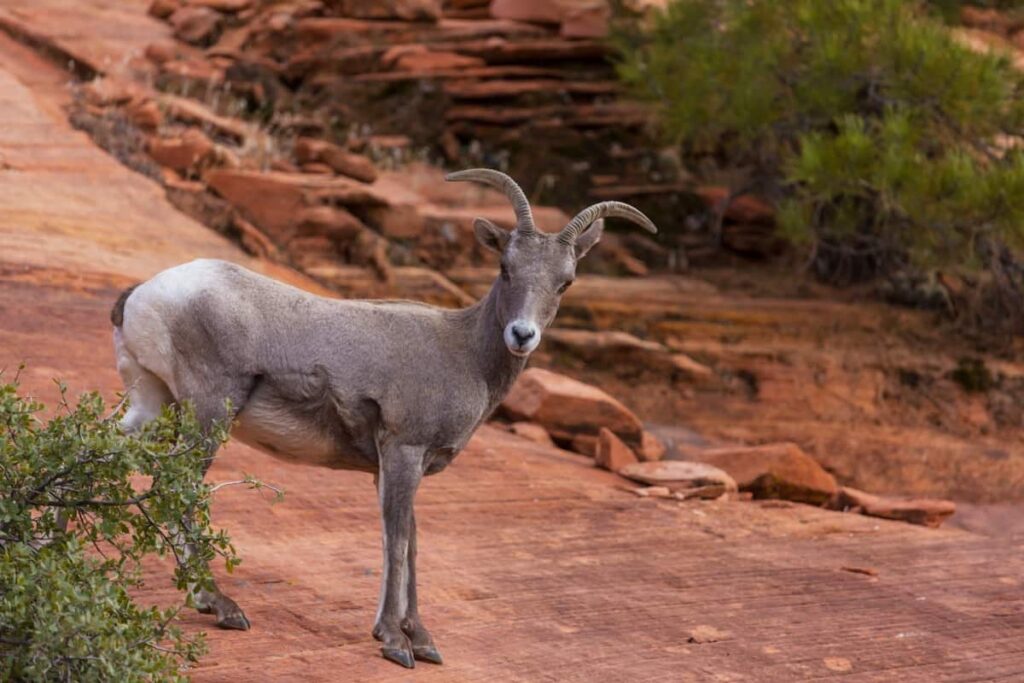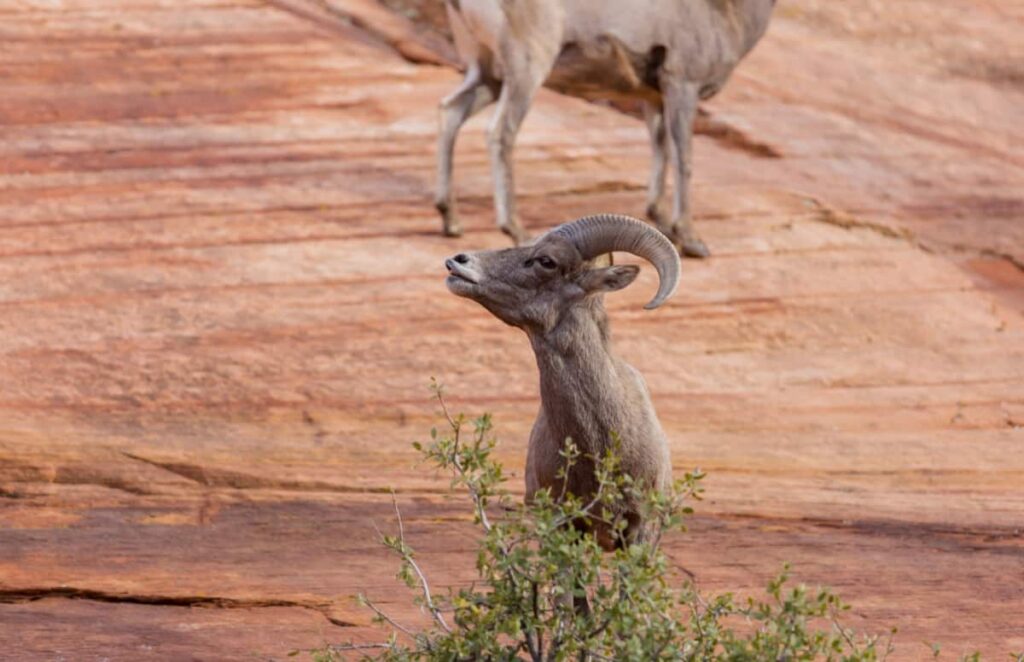Altai Mountain Goat, also known as the Siberian ibex, is a breed of wild goat found in the mountainous regions of Central Asia, specifically the Altai Mountains. These majestic creatures are well-adapted to their rugged habitat, with unique characteristics that set them apart. Altai Mountain Goats are known for their impressive size, with males weighing up to 250 kilograms and standing over 1 meter tall at the shoulder.

They have a distinctive appearance, with long, curved horns reaching 1 meter. Their fur is thick and dense, providing insulation against the harsh mountain climates they inhabit. These goats are highly agile, easily navigating rocky terrain and leaping steep slopes. They are also known for their exceptional climbing abilities, scaling cliffs, and traversing steep slopes in search of food. Altai Mountain Goats primarily feed on grasses, herbs, and shrubs and are well-adapted to survive in the sparse vegetation of their mountainous habitat.
Altai Mountain Goat Breed Profile
History and Origin of the Altai Mountain Goat
- The breed was developed between 1944 and 1982 through cross-breeding with local goats and originated in the Altai Republic region of the Altai Mountains.
- The breed was created to produce high-wool goats that could survive the severe winters of Siberia.
Usage of Altai Mountain Goat
- The Altai Mountain goat is a domestic goat breed primarily used for wool production.
- The breed was developed between 1944 and 1982 in the Gorno-Altai Autonomous Soviet Socialist Republic region of the Soviet Union.
- The breed was created through cross-breeding between the Don goat and local goats to achieve a high wool yield.
- Altai Mountain goats are known for their excellent wool quality, which is dense, soft, and warm, making them ideal for producing high-quality wool products.
- The wool of Altai Mountain goats is used for various purposes, including making yarn, textiles, and clothing items like sweaters, socks, and blankets.
- Altai Mountain goats are well-suited to the harsh climate and rugged terrain of the mountainous Altai region, where they are raised for their wool in small herds.
- The breed is highly adaptable and thrives in the challenging conditions of its native habitat, making them a valuable resource for wool production in the region.
Special Facts on Altai Mountain Goat
- Altai Mountain Goats are known for their strong constitution and adaptability to the harsh conditions of extensive husbandry in highland areas.
- The wool of Altai Mountain Goats has high technical qualities and is a valuable commodity for the light industry.
- The guard hair of Altai Mountain Goats is black, while the true wool is dark grey.
- The fleece of Altai Mountain Goats contains a high wool content, ranging from 65-70 percent.
- On average, bucks (males) of this breed weigh about 65-70 kg, while does (females) weigh around 41-44 kg.
- Altai Mountain Goats are horned, with both males and females having horns.
- They are well-adapted to various climates and can tolerate different weather conditions.
- The coat color of Altai Mountain Goats can be black or grey.
- The average wool production for bucks is about 600-900 grams; for does, it is about 450-600 grams.
Physical Characteristics of the Altai Mountain Goat
Altai mountain goats are primarily herbivorous, feeding on different vegetation, including grasses, shrubs, and lichens, which they browse on rocky ledges and cliffs. They have a stocky body with dense fur ranging from light brown to grayish-white, helping them blend into their rocky surroundings. Adult males, known as bucks, are larger than females, or do, with a body length of up to 180 cm and a shoulder height of around 100 cm. Bucks can weigh up to 60-70 kg, while does are smaller, weighing around 40 kg.
How to Start Altai Mountain Goat Farming
- Research and familiarize yourself with the Altai mountain goat breed, including its characteristics, requirements, and market demand.
- Identify suitable land for your goat farm in the Altai mountain region, considering grazing land availability, water access, and climate conditions.
- Obtain necessary permits and licenses for goat farming in your area, and comply with local regulations and laws.
- Develop a comprehensive business plan that includes budgeting, marketing strategies, and goat management practices.
- Build appropriate infrastructure for your goat farm, such as shelters, fences, and feeding stations, to ensure the well-being and safety of the goats.
- Acquire Altai mountain goats from reputable sources, considering age, health, and genetics.
- Implement proper nutrition and health care practices, including regular vaccinations, deworming, and monitoring of goat health.
- Develop a grazing plan to ensure that goats have access to adequate pasture and forage, and practice rotational grazing to prevent overgrazing.
- Develop a marketing strategy to sell your Altai mountain goat products, such as wool and wool, to target local or niche markets that value the breed’s unique characteristics.
In case you missed it: Goat Breeding and Genetics for Improved Productivity and Disease Resistance

Benefits of Altai Mountain Goat Farming
- Meat: The Altai Mountain Goat provides flavorful meat commonly used for sausage making in Russia.
- Hide: The soft and durable hide of the goat is used to make leather clothing and accessories like boots, coats, gloves, and hats.
- Horn: The durable horns of the goat are traditionally used for knife handles, headpieces, furniture handles, and decorative objects.
- Milk: The goat’s milk is soft, rich, and highly nutritious and can be used fresh or preserved for later use in food products, cheese, and ice cream.
- Medicinal Benefits: The ground horn of the Altai Mountain Goat has medicinal properties and is used in folk medicine to treat various ailments.
- Scientific Benefits: The inner ear of the goat is a powerful natural magnet used to study magnetic fields and the composition of volcanoes.
- Wool: The wool of the Altai Mountain Goat is extremely warm, durable, lightweight, and water-resistant and can be made into high-quality fabric for luxurious clothing.
- Ticks: The goat is an excellent host for ticks, preventing new ticks from entering.
- Dog Food: Raw goat meat and bones are highly nutritious for dogs, supporting their bones, teeth, skin, and immune system.
- Hay: Goat hair fiber can make high-quality paper, strong rope, shingles, tent poles, and more.
Feeding Habits of Altai Mountain Goat
- Altai Mountain Goats need a balanced diet of protein and carbohydrates to maintain their high-quality fur coat.
- They are grazing animals and require access to large fields with plenty of fresh grasses, leaves, and other vegetation.
- Farmers may supplement their regular diet with a balanced mineral supplement to keep their coats thick and healthy.
- Altai Mountain Goats are herbivores that primarily graze on grass, leaves, and other vegetation found in their natural habitats. Their diet should consist of high-quality forage free from molds, fungi, and other harmful substances.
- Goats require 10-12% protein to support their growth, reproduction, and maintenance.
- They also need carbohydrates for energy, which they obtain from the sugars and starches in their feed.
- Apart from grass and leaves, goat farmers may feed them hay, alfalfa, and other leguminous forages.
Reproduction and Care in Altai Mountain Goat
- Altai Mountain goats were selectively bred to increase the amount of wool they produced.
- This led to a significant increase in their population, which grew almost 30% in one year.
- Today, Altai Mountain goats are bred primarily for their population growth and are known for their climate tolerance.
- They can be kept on pasture year-round, making them ideal livestock animals for colder climates.
- Reproduction is an important part of their care, and farmers must ensure that mating occurs at the optimal time to produce healthy offspring.
- The gestation period for Altai Mountain goats is around five months, and females usually give birth to one or two kids at a time.
In case you missed it: Innovative Housing and Shelter Designs for Profitable Goat Farming

Conclusion
Altai Mountain goats are a hardy breed of livestock known for their wool production and climate tolerance. Originally bred for wool production, they are primarily bred for population growth. With their ability to thrive in harsh environments, proper care and nutrition are essential to maintain their overall health and productivity.
- Types of Grass Growing for Goat Farm
- How to Train Goats for Milking: A Beginners Guide
- Goat Milking Practices and Equipment: A Beginner’s Guide
- Goat Farming for Fiber: Producing Mohair and Cashmere
- Maximizing Goat Milk Production: Tips for Dairy Goat Farmers
- Goat Farming as a Family Business: Strategies for Success
- Profitable Kenya Goat Breeds for Commercial Dairy and Meat Business
- Unlock the Secrets of Oberhasli Goat: Discover Raising and Management Practices
- Ultimate Guide to Myotonic Goats: Explore Profile to Raising